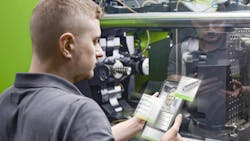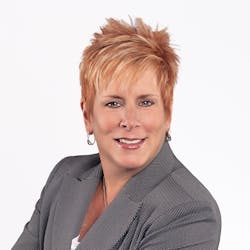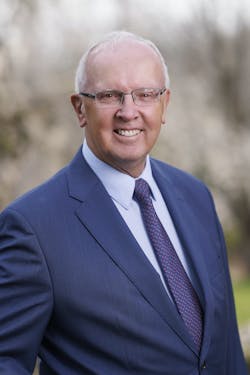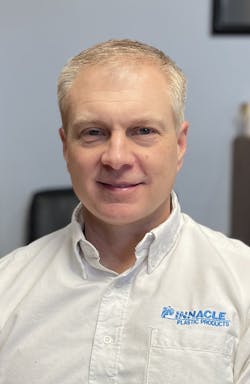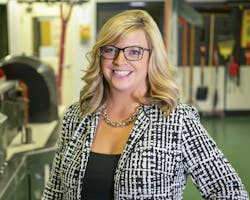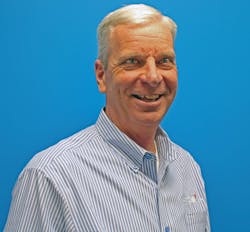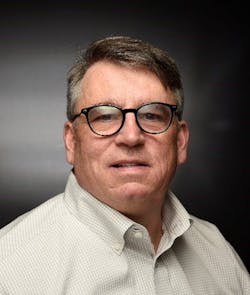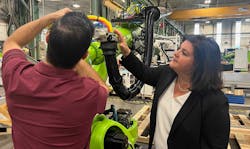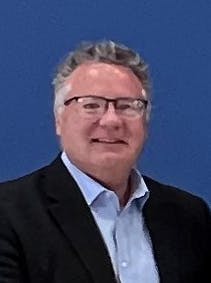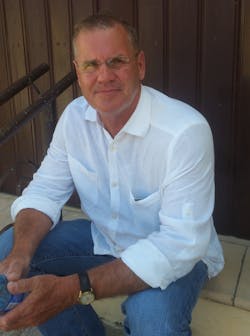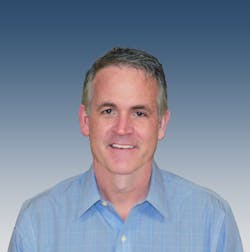Plastics OEMs, processors look to 2024 equipment investments
By Lynne Sherwin
The past four years have buffeted the plastics industry, between a global pandemic that lifted some boats while sinking others, an ongoing labor shortage and an economic landscape that hasn’t always followed traditional contours.
For 2024, “cautious optimism” is a refrain among OEMs, processors and industry experts — a hope that business might be gradually returning to normal, or whatever normal looks like now.
Plastics Machinery & Manufacturing’s fifth annual survey of machinery investment plans, conducted in October, reflects this. In last year’s survey, with recession fears, lack of workers and supply chain kinks on processors’ minds, only 44 percent thought their business would improve in 2023, and 43 percent expected it to remain the same. This year’s survey showed a little more optimism, with 56 percent saying they expect 2024 to be better than 2023, and 31 percent believing business will be about the same.
Sixty-one percent of respondents plan to invest in primary processing equipment in 2024, down from 66 percent in 2023. Expansion of manufacturing capacity is the main reason, cited by 85 percent of those who plan to buy, while 51 percent say they are replacing existing equipment and 15 percent are adding new processing capabilities.
Half of respondents say they plan to spend more than last year, but most are not making large expenditures; 58 percent of those buying new primary equipment will spend less than $1 million.
Survey respondents who employ injection molding number just over half, at 52 percent; mold or tool making or repair, 24 percent; recycling, 22 percent; additive manufacturing/3D printing, 19 percent; blow molding, 13 percent; pipe, profile or tube extrusion, 13 percent; film or sheet extrusion, 11 percent; compounding, 11 percent; thermoforming, 7 percent; and rotomolding, 2 percent. (Respondents could choose more than one process.)
Looking at the survey results and his own research, Perc Pineda, chief economist for the Plastics Industry Association (PLASTICS), was one of those using the term “cautious optimism,” citing that under-$1 million figure for primary equipment expenditures.
“But it still is a good indication, and perhaps the reason for this is there is probably a proclivity to invest more in auxiliary equipment as opposed to the primary equipment ... but it’s not really expected that it would follow a straight line upward or downward moving forward,” he said.
That’s also reflected in PMM’s survey results. Sixty-eight percent of respondents said they are planning to invest in auxiliary equipment (not including automation), and 81 percent of those say it’s to expand manufacturing capacity. Twenty-seven percent plan to spend more than $100,000.
Too much capacity, not enough growth
One factor dampening sales of primary equipment is that many processors bought machines in the last three years to meet pandemic-driven demands. Now, some of those machines are underutilized or even sitting idle.
“We have a tremendous overcapacity situation in plastics right now,” said consultant and analyst Laurie Harbour, president of Harbour Results, in the Dec. 14 episode of the PMM Insight podcast.
Harbour Results recently gathered data from around 150 small and mid-size molders, and found they were operating at about 60 percent utilization on a five-day, 24-hour shift pattern.
“There’s thousands and thousands of molders. And when you look across that base, there's a real struggle to fill capacity, and volumes are down right now, not just in automotive, but appliances and all the things that went crazy in COVID. ... Things that were sort of discretionary, but we had this extra money to spend on it, have now dropped down,” Harbour said.
“My biggest request from clients right now is, ‘Help me find new customers. Help me find where I can go fill my capacity,’ ” she said.
Harbour believes processors will mostly be investing in machinery for replacement and repair for a few years, until the economy finally returns to “some normal — I don't know what normal is anymore, but some normal level.”
Pineda predicted “a continued crawl to a low level of growth,” considering the uncertainty in the economy, lingering fears of a recession and month-to-month ups and downs in the industry. “Everything will depend on how this ongoing economic climate morphs into the next six months or 12 months.”
More than half of respondents to PMM’s survey said labor issues (54 percent) and the state of the economy (58 percent) had a negative effect on their business in 2023. Supply chain problems negatively affected 44 percent of respondents, resin shortages and prices, 31 percent.
Processors offer perspectives
Mel O’Leary Jr., president and CEO of Meredith-Springfield Associates, a Ludlow, Mass., blow molding operation, spoke to PMM a year ago to give his perspective as part of the fourth annual survey. At that time, he said he was already running as if the economy were in recession, and he expected business in 2023 to remain at about the same level as the second half of 2022.
“Our business unfolded as we predicted; up about 6 percent for ’23 over ’22 but not for the reasons we based our budgets on,” he said in November when asked to look back on that prediction. Sales were down with some of the company’s legacy accounts while other customers “right-sized” their inventories.
But, he said, “we did have a surge of new business from new clients in packaging and medical spaces that we did not see coming in ’22. Those sales offset the gap and contributed to our overall sales growth — thankfully.”
He reported a slight but steady upward trend from legacy accounts beginning in the third quarter of 2023, and although he expects another minor downturn before business returns to pre-pandemic levels, “I hate to parrot the term, but ‘cautiously optimistic’ well describes our overall outlook for ’24.”
He plans to invest in auxiliary and automation equipment in 2024.
Brian Hoffbauer, director of engineering for blow molder Pinnacle Plastic Products in Bowling Green, Ohio, said it’s hard to predict the road ahead.
Some customers delayed or reduced orders in early 2023, which he believes was partly due to interest rates and inflation, as well as weather factors, since Pinnacle makes equipment for outdoor activities like pools and ice rinks. Other major industries the company serves include medical, automotive, construction and wastewater removal.
“Overall, I think 2024 is going to be a tough year,” he said. “With the economy still somewhat unstable, and the election in the fall, I think everyone is going to be in a ‘wait-and-see’ mode.”
Pinnacle’s investment plans include a new granulator and feeder conveyor, machine controllers and possibly automation equipment.
OEMs offer mixed outlooks for 2024
Among machinery manufacturers, expectations for the year ahead ranged across the board. Some say they think high interest rates and the economy will continue to drag down sales, while others see some daylight.
“Globally, we are seeing the same type of recession activity that everyone else is seeing,” said Bob Martin, senior VP of global sales for KraussMaffei. He still expects 2024 to be one of the company’s strongest years.
“It appears, and it has been reported, that 2024 will be initially a continuation of challenged CAPEX [capital expenditure] spends, but there appears great opportunity in the global extrusion and RPM [reaction process machinery] business, and a steady IMM in medical and automotive, with the recovery from the U.S. UAW work stoppages,” he said.
Entek, which makes twin-screw extruders, anticipates a slow start to the year and is being conservative on revenue projections. “It would be fantastic if we’re reading the signs incorrectly; however, we’re expecting a softer than desired year,” said Linda Campbell, VP of sales.
Absolute Haitian saw slower sales in 2023 than during the record years of 2020-22, as excess capacity and higher interest rates delayed some investments, said co-owner Glenn Frohring. But the third quarter showed improvement, and he expects the upward trend to continue in 2024.
Daniel Gneuss, president of Gneuss Inc., said he expects a challenging environment in Europe and South America, but hopes that North American and Asian sales of the company’s extrusion and recycling equipment can help fill the gap.
Charlie Martin, president of extruder maker Leistritz, thinks it will be a “middle-of-the-road year” with sales of twin-screw extruders down, but customers are showing interest in “stringing together different extruders in one system and integrating twin-screw extruders into co-ex [co-extruder] film and sheet systems.”
Echoing Pineda’s statement and the PMM survey responses that many processors are interested in auxiliary equipment, Sam Rajkovich, VP sales and marketing for Conair, sees a strong year ahead.
“We find that processors are continuing to invest in projects and systems, and that demand and bookings across our product range are solid,” he said. “I think that the industry is still catching up with some pent-up demand resulting from the supply chain shocks that delayed equipment deliveries into 2023.”
After an “interesting and somewhat challenging 2023,” Jim Healy, VP sales and marketing for automation provider Sepro America, also used the phrase “cautiously optimistic.”
Economic factors in play
Healy anticipates a rebound in the second half of 2024, with a boost coming from the return of NPE in May, and potentially a reduction in interest rates that will encourage businesses to invest.
“I don’t think there is any question that high interest rates are affecting purchasing decisions. This has led our customers to delay capital equipment decisions, taking a more of a ‘wait-and-see’ approach instead. We hope falling interest rates, which we anticipate starting in Q1 2024, will change that dynamic,” he said.
Other OEM representatives, including Gneuss, Charlie Martin and Campbell, echoed Healy’s assessment that inflation and high interest rates have discouraged investment in equipment.
Pineda said that burden tends to fall more heavily on smaller companies.
“Those who have good free cash flow, they don’t have that issue of financing,” he said. “But if you look at small companies, even medium-sized companies, that would have to tap the credit markets quite frequently, be it to refinance their inventory or whatever the case may be, then it is an issue.”
He recently analyzed financial reports from 11 publicly traded companies across the plastics industry, including machinery manufacturers, processors and mold makers, and for some, the amount they spent on interest had not changed.
But for others, interest expenses have increased — for one company, it had nearly doubled year over year from the second quarter of 2022 to 2023.
“So, it boils down to, initial conditions really matter when the economy slows down,” he said. “That partly explains why some businesses continue to make money during the downside cycle of the economy.”
Frohring acknowledged interest rates had a negative influence on Haitian's sales — “Margins are tight for some of our customers, so lending is an issue” — but for some customers, a new machine could make up for interest expenses with other benefits.
“Much of our business is replacing older equipment that isn’t energy efficient. Older machines stop being a profit producer and then cost you money not just because of higher energy costs but the cost of spare parts, too,” he said. “In this scenario, profitability of a new machine outweighs the cost of higher interest rates.”
Frohring also said Haitian has been working with companies that are consolidating locations and need machines with smaller footprints and shorter heights.
“We’re seeing an increase in the sale of compact two-platen machines and options such as tie bar pullers. Wide platen options are also becoming more common so that customers can put larger molds in smaller machines,” he said. “We’re helping them accommodate big machines in small corners.”
Supply chain stabilizes
The pandemic-era supply chain issues that plagued OEMs and processors alike are receding. Machinery manufacturers say they have mostly cleared their order backlogs, and for some, the crisis even led to operational improvements.
Gneuss said his company has invested heavily in manufacturing capabilities and now is in better position to serve its customers than before the pandemic, while Campbell said Entek has increased its focus on supply chain management.
Rajkovich detailed several steps that Conair has undertaken to improve its on-time delivery: “First, we launched a yearlong continuous improvement effort aimed at expanding our supplier base, and that has helped. Also, we have expanded our internal manufacturing and assembly capabilities where we felt we could deliver product better and faster. Our OTD [on-time delivery] performance increased throughout 2023 and is now coming back toward normal levels.”
End-market and sustainability trends
How much the automotive sector will grow remains a question mark as production turns to electric vehicles.
“Money from the federal Inflation Reduction Act is changing the market as automobile manufacturers shift to electric vehicles,” said Bob Martin, noting that KraussMaffei is positioning itself to help processors meet those needs.
Pineda’s forecast for automotive is that “we still see growth next year, but not as strong as this year.”
As for other end markets, Pineda sees a drop in construction activity. Campbell said Entek is noticing a “pause” in capital purchases in the home-building sector.
Medical and packaging applications are steady or growing, according to Pineda and some of the OEM representatives.
“Food and beverage packaging and personal care are getting back to innovating again, and medical packaging and other health-care articles are coming on strong,” said O’Leary, of blow molder Meredith-Springfield.
Processors also are looking to make their operations more sustainable.
“Recycling overall is still a dynamic market, especially for polymers that have been ignored in the past,” Gneuss said. “Companies are looking for cost-efficient technologies, as, at the end, recycling has to be able to compete price-wise and performance-wise against virgin material. The plastic industry needs to find sustainable solutions to address the growing pressure it is facing.”
Charlie Martin said Leistritz is seeing more interest in bioplastics, and Vanessa Malena, president of Engel North America, said her company is getting requests from molders “seeking to diversify their materials and elevate recycled content. However, it’s important to note that the demand is relatively lower than in Europe, where stringent mandates contribute to a higher level of interest and implementation.”
In addition to emphasizing energy savings in its injection molding machine designs, Frohring said Haitian is working on the efficiency of its own manufacturing processes, making improvements such as installing photovoltaic systems on its plant roofs.
“Automation and sustainability are at the top of most buyers’ lists, and now more than ever, large producers are willing to pay for value-added features in these areas,” Campbell said.
Automation slows, but still a factor
Driven by pandemic needs and the labor shortage, robot sales in North America smashed records in 2021 and 2022. That momentum slowed significantly in 2023, according to figures from A3, the Association for Advancing Automation.
Fewer respondents to PMM’s survey plan to buy robots or other automation in 2024 — 41 percent, down from 46 percent in the previous year’s survey. But 71 percent of those investing in automation plan to spend more than last year, and 45 percent plan to spend more than $100,000.
Here again, interest rates and workforce concerns are factors.
“We are all aware of the ongoing labor issues that the economy is facing, and to implement automation, we also need technically skilled workers that could not only implement it but keep it running at a rate that’s actually going to be efficient,” Pineda said.
“It is a goal that it would be nice to accomplish in a short term, but I think it’s more of a medium- to a long-term target,” he said, noting that the technology “doesn’t come cheap, particularly now with the high interest rates.”
Healy, of Sepro, agreed that workers need to know how to get the most out of automation: “There is no question that automation plays a big role in reducing labor costs and achieving consistency in the manufacture of a product. Any successful automated cell/solution must include training so that operators have the necessary skills prior to implementation of the cell.”
KraussMaffei is seeing “tremendous growth in automation,” Bob Martin said, adding, “But it can be daunting if you’ve never had to use a robot interfaced with a machine before. We are offering automation to companies that never considered it before, and we’re cognizant we have to help them through this learning curve.”
The company is emphasizing fully automated, “lights-out” systems created through partnerships with suppliers or vertically integrated solutions for one-stop shopping, he said.
Haitian is also selling more integrated systems in partnership with its sister automation company, Frohring said.
“An increasing number of our machine sales are now machine cells, the molding machine and top-entry robot as one package. That’s an advantage we have, operating Absolute Haitian for machinery and Absolute Robot for robots — it’s easy for us to deliver the cell as one unit,” he said.
Haitian is also seeing success with integrating Fanuc six-axis robots and cobots into cells, Frohring said.
Malena reported increased interest in turnkey solutions, and said Engel has increased capacity at its U.S. automation center in response.
Repetitive manual tasks like machine tending are not the only areas where automation can make processes quicker and more accurate; increasingly, processors and machinery manufacturers are employing artificial intelligence, Industry 4.0 features and systems like enterprise resource planning (ERP) and predictive maintenance to improve operations and compensate for the shortage of skilled workers.
“Conair has experienced very strong, growing systems sales, which indicates to us that some processors do not have the internal staff and resources it takes to plan and execute new facilities, line expansions, material-handling projects, water systems — those types of things. They are looking to us to provide the installation and ensure that new equipment gets up and running properly,” Rajkovich said.
“We’re also noting increased interest in equipment monitoring/machine health services and equipment service agreements, both of which allow processors to focus their staff on production, while outsourcing their equipment uptime and maintenance concerns to equipment suppliers like Conair,” he said.
“Advances in artificial intelligence are enabling new levels of automation and data-driven decision-making,” he said. “At the same time, the ready availability of cloud-based manufacturing solutions, with their scalability and compute power, are helping to level the playing field for small to medium plastics processors.”
He anticipates AI will help manufacturers capture the knowledge of their in-house experts before they retire, and to integrate operations when one company is acquired by another.
A big return on investment
Injection molder Champion Plastics Inc. in Auburn Hills, Mich., has been turning to automation to help manage its growing operation amid the labor shortage. That will continue in 2024 as the company plans to add two or three new manufacturing cells, according to President Jeff Ignatowski.
Champion also is purchasing a Keyence optical scanner to inspect parts, and will automate application of adhesive tape.
“This is Phase 2 of the previous automation in which we utilize plasma treating,” Ignatowski said. “This will continue our strategy of automating the existing mundane assembly projects and reallocating that labor to new value-added projects.”
Champion isn’t the only processor realizing the benefits of automation.
At Pinnacle, some secondary operations, like part finishing, are in Hoffbauer’s sights for future automation projects, to improve quality and consistency as well as insulate against the worker shortage: “Labor availability is like a wave, where we are OK for a time and then we are looking again,” he said.
O’Leary said Meredith-Springfield got even more out of its automation investments than the company expected, and is planning to automate more tasks in 2024, including resin storage and conveying, as well as automated inspection, conveying and bagging of parts.
“We were looking for payback from labor savings only, but that is turning out to be only part of the equation,” he said. “Net production after scrap and waste is better from the lines we have automated, and the overall product quality is higher.”
Getting more out of your investment than you expected — that’s the kind of result every processor hopes for when compiling an equipment shopping list.
Senior staff reporters Bruce Geiselman and Karen Hanna contributed to this report.
For more information
Arburg Inc., Rocky Hill, Conn., 860-667-6500, www.arburg.com
Conair Group, Cranberry Township, Pa., 724-584-5500, www.conairgroup.com
DelmiaWorks, Dassault Systèmes, Waltham, Mass., 800-693-9000, www.3ds.com/products-services/delmiaworks
Engel Machinery Inc., York, Pa., 717-764-6818, www.engelglobal.com
Entek, Lebanon, Ore., 541-259-3901, https://entek.com
Gneuss Inc., Matthews, N.C., 704-841-7251, www.gneuss.com/en
Harbour Results Inc., Southfield, Mich., 248-552-8400, www.harbourresults.com
KraussMaffei Corp., Florence, Ky., 859-283-0200, www.kraussmaffei.com
Leistritz Extrusion, Somerville, N.J., 908-685-2333, https://extruders.leistritz.com
Plastics Industry Association, Washington, 202-974-5200, www.plasticsindustry.org
Sepro America LLC, Warrendale, Pa., 412-459-0450, www.sepro-group.com
About the Author
Lynne Sherwin
Managing Editor
Managing editor Lynne Sherwin handles day-to-day operations and coordinates production of Plastics Machinery & Manufacturing’s print magazine, website and social media presence, as well as Plastics Recycling and The Journal of Blow Molding. She also writes features, including the annual machinery buying survey. She has more than 30 years of experience in daily and magazine journalism.
Bruce Geiselman
Senior Staff Reporter Bruce Geiselman covers extrusion, blow molding, additive manufacturing, automation and end markets including automotive and packaging. He also writes features, including In Other Words and Problem Solved, for Plastics Machinery & Manufacturing, Plastics Recycling and The Journal of Blow Molding. He has extensive experience in daily and magazine journalism.
Karen Hanna
Senior Staff Reporter
Senior Staff Reporter Karen Hanna covers injection molding, molds and tooling, processors, workforce and other topics, and writes features including In Other Words and Problem Solved for Plastics Machinery & Manufacturing, Plastics Recycling and The Journal of Blow Molding. She has more than 15 years of experience in daily and magazine journalism.
